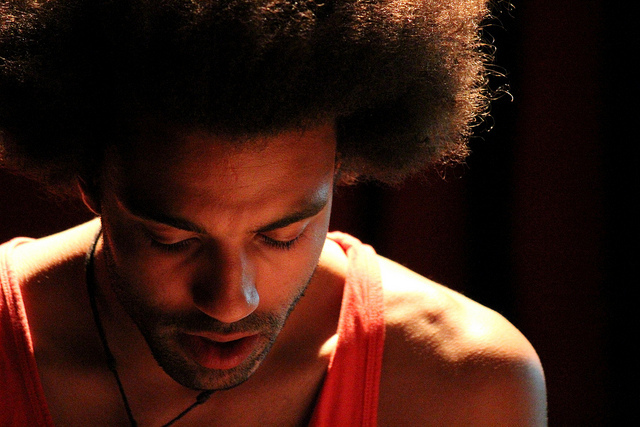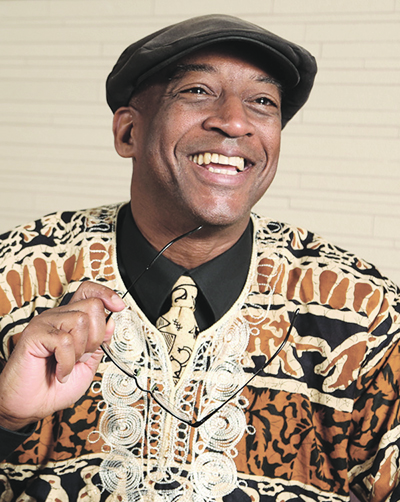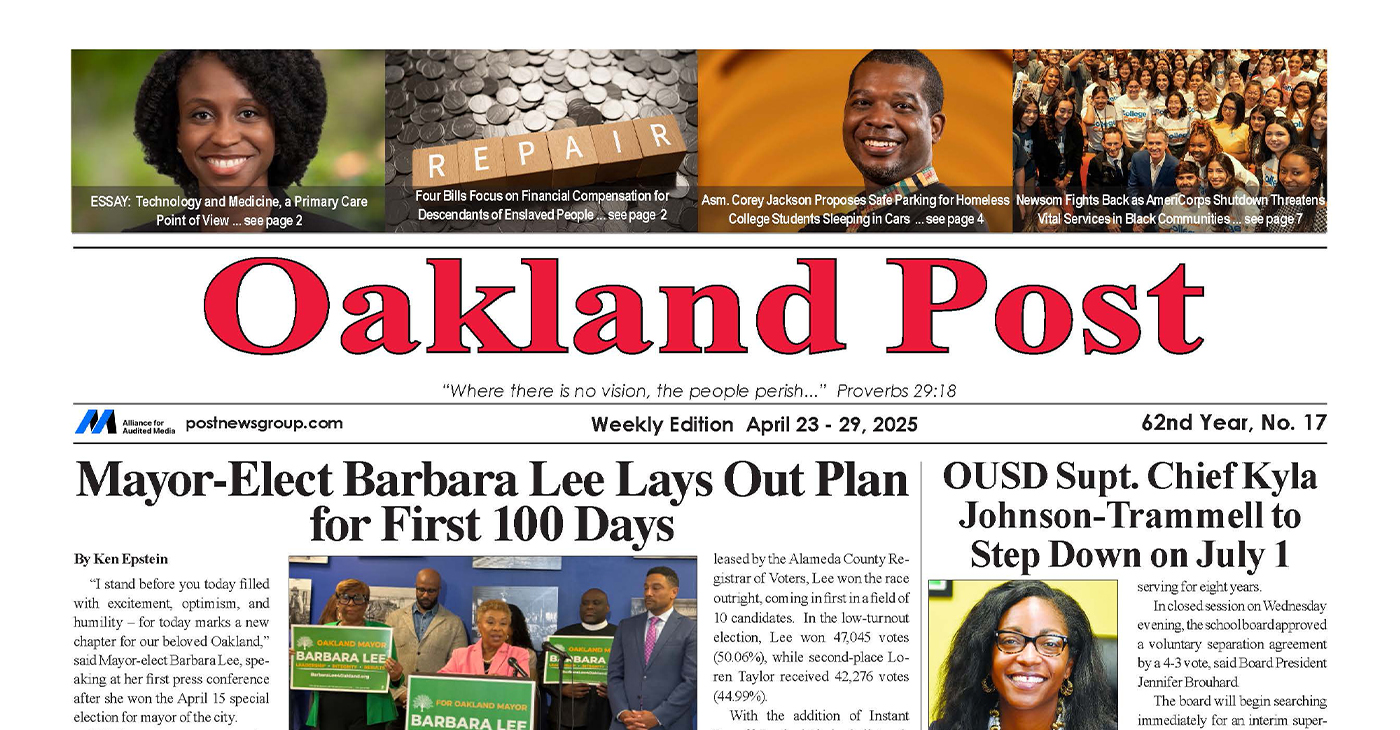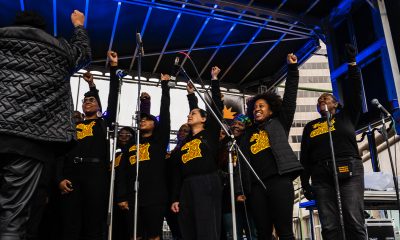Community
At the Crossroads: Where is the Healing from Terrorism and Trauma at the Hands of Police?

By Tony (Heru) Jackson, Ph.D. | Bay Area Chapter of the ABPsi
As we approach the Association of Black Psychologists’ 50th anniversary, we are called to step up and step out in order to serve our people and all people of good will, in a country that seems to have become more comfortable expressing and acting on the scourge and sickness that is racism.
Police violence is endemic all across America. It is pervasive, historic and ongoing where Black people are concerned, with devastating health consequences. The collection of these names of victims murdered or maimed and the families left behind seem to be never ending: Treyvon Martin, Oscar Grant, Amidou Diallo, Tamir Rice, Eric Garner, Sandra Bland, LaTasha Harlings, Troy Davis, Renisha McBride, Kendrick Johnson, Freddy Gray, Michael Brown, Mario Woods, Darren Manning, Philando Castile, Alton Sterling, Delwran Small, Alva Brazil, Kalief Browder, Angel Ramos, Stephon Clark and on and on.
Nowhere do we find a more salient and ugly representation of the abuses of a grossly unbalanced power structure than in the relationship between the system’s enforcement apparatus (the police) and Black men, women and children.
What too often goes unnoticed is the devastating impact on the women and family members who survive the loss of their loved ones. The deaths of Venida Browder (mother of Kalief Browder) and more recently Erica Garner (daughter of Eric Garner) stand as stark examples of the slow death often associated with resulting broken hearts. Added to this is the stress of having to pursue justice from a recalcitrant system built to protect the perpetrators (in or out of uniform, if they are white) and vilify the victims. Ill-treatment at the hands of law enforcement leaves its victims frustrated, angry, and depressed.
It is important to note, that both psychological and physiological stress create the same physiological changes and can have the same adverse consequences on the brain. Long work weeks, toxic relationships, lack of sleep, and lack of outlets for stress let alone the ongoing stress associated with “Persistent Traumatic Stress”, can all can lead to negative shaping (plasticity) of the mind. This increased efficiency in responding to stress generates heightened levels of response to less stress, a hair trigger response and to PTSD (Post Traumatic Stress Disorder) like symptoms. With chronic sympathetic activity, we are constantly on guard a with a nervous system that is consistently on aggravated.
Another way stress and trauma produce an adrenal impact is by affecting the production of a natural steroidal hormone (dehydroepiandrosterone – DHEA) that plays an important role in synthesizing important hormones like estrogen and testosterone which help produce important neurotransmitters responsible for mood.
Where is the Healing? The damage is multifaceted and multi-generational. The strategies toward healing must be multi-faceted and multi-generational. It will take all our efforts and acumen operating in the healing realm, in our communities, in our families and in our personal regimen to (1) end the scourge of police violence in our communities, aided and abetted by a racist superstructure and (2) develop community-based healing and wellness strategies designed to restore wellness and wellness for our people.
The Bay Area Chapter of the Association of Black Psychologists has advanced traditional medicine as well as new technologies for healing.
You can hear about and experience these strategies and more at the ABPsi’s 50th Annual International Convention from June 27th-July 1st, 2018 at The Marriott in Downtown Oakland.

Tony (Heru) Jackson
Tony (Heru) Jackson, Ph.D., Chapter President, Bay Area Chapter of the ABPsi; Co-Founder: PranaMind.com, Love Not Blood Campaign.
Activism
Oakland Post: Week of April 23 – 29, 2025
The printed Weekly Edition of the Oakland Post: Week of April 23 – 29, 2025

To enlarge your view of this issue, use the slider, magnifying glass icon or full page icon in the lower right corner of the browser window.
#NNPA BlackPress
Chavis and Bryant Lead Charge as Target Boycott Grows
BLACKPRESSUSA NEWSWIRE — Surrounded by civil rights leaders, economists, educators, and activists, Bryant declared the Black community’s power to hold corporations accountable for broken promises.

By Stacy M. Brown
BlackPressUSA.com Senior National Correspondent
Calling for continued economic action and community solidarity, Dr. Jamal H. Bryant launched the second phase of the national boycott against retail giant Target this week at New Birth Missionary Baptist Church in Atlanta. Surrounded by civil rights leaders, economists, educators, and activists, Bryant declared the Black community’s power to hold corporations accountable for broken promises. “They said they were going to invest in Black communities. They said it — not us,” Bryant told the packed sanctuary. “Now they want to break those promises quietly. That ends tonight.” The town hall marked the conclusion of Bryant’s 40-day “Target fast,” initiated on March 3 after Target pulled back its Diversity, Equity, and Inclusion (DEI) commitments. Among those was a public pledge to spend $2 billion with Black-owned businesses by 2025—a pledge Bryant said was made voluntarily in the wake of George Floyd’s murder in 2020.“No company would dare do to the Jewish or Asian communities what they’ve done to us,” Bryant said. “They think they can get away with it. But not this time.”
The evening featured voices from national movements, including civil rights icon and National Newspaper Publishers Association (NNPA) President & CEO Dr. Benjamin F. Chavis Jr., who reinforced the need for sustained consciousness and collective media engagement. The NNPA is the trade association of the 250 African American newspapers and media companies known as The Black Press of America. “On the front page of all of our papers this week will be the announcement that the boycott continues all over the United States,” said Chavis. “I would hope that everyone would subscribe to a Black newspaper, a Black-owned newspaper, subscribe to an economic development program — because the consciousness that we need has to be constantly fed.” Chavis warned against the bombardment of negativity and urged the community to stay engaged beyond single events. “You can come to an event and get that consciousness and then lose it tomorrow,” he said. “We’re bombarded with all of the disgust and hopelessness. But I believe that starting tonight, going forward, we should be more conscious about how we help one another.”
He added, “We can attain and gain a lot more ground even during this period if we turn to each other rather than turning on each other.” Other speakers included Tamika Mallory, Dr. David Johns, Dr. Rashad Richey, educator Dr. Karri Bryant, and U.S. Black Chambers President Ron Busby. Each speaker echoed Bryant’s demand that economic protests be paired with reinvestment in Black businesses and communities. “We are the moral consciousness of this country,” Bryant said. “When we move, the whole nation moves.” Sixteen-year-old William Moore Jr., the youngest attendee, captured the crowd with a challenge to reach younger generations through social media and direct engagement. “If we want to grow this movement, we have to push this narrative in a way that connects,” he said.
Dr. Johns stressed reclaiming cultural identity and resisting systems designed to keep communities uninformed and divided. “We don’t need validation from corporations. We need to teach our children who they are and support each other with love,” he said. Busby directed attendees to platforms like ByBlack.us, a digital directory of over 150,000 Black-owned businesses, encouraging them to shift their dollars from corporations like Target to Black enterprises. Bryant closed by urging the audience to register at targetfast.org, which will soon be renamed to reflect the expanding boycott movement. “They played on our sympathies in 2020. But now we know better,” Bryant said. “And now, we move.”
#NNPA BlackPress
The Department of Education is Collecting Delinquent Student Loan Debt
BLACKPRESSUSA NEWSWIRE — the Department of Education will withhold money from tax refunds and Social Security benefits, garnish federal employee wages, and withhold federal pensions from people who have defaulted on their student loan debt.

By April Ryan
Trump Targets Wages for Forgiven Student Debt
The Department of Education, which the Trump administration is working to abolish, will now serve as the collection agency for delinquent student loan debt for 5.3 million people who the administration says are delinquent and owe at least a year’s worth of student loan payments. “It is a liability to taxpayers,” says White House Press Secretary Karoline Leavitt at Tuesday’s White House Press briefing. She also emphasized the student loan federal government portfolio is “worth nearly $1.6 trillion.” The Trump administration says borrowers must repay their loans, and those in “default will face involuntary collections.” Next month, the Department of Education will withhold money from tax refunds and Social Security benefits, garnish federal employee wages, and withhold federal pensions from people who have defaulted on their student loan debt. Leavitt says “we can not “kick the can down the road” any longer.”
Much of this delinquent debt is said to have resulted from the grace period the Biden administration gave for student loan repayment. The grace period initially was set for 12 months but extended into three years, ending September 30, 2024. The Trump administration will begin collecting the delinquent payments starting May 5. Dr. Walter M. Kimbrough, president of Talladega College, told Black Press USA, “We can have that conversation about people paying their loans as long as we talk about the broader income inequality. Put everything on the table, put it on the table, and we can have a conversation.” Kimbrough asserts, “The big picture is that Black people have a fraction of wealth of white so you’re… already starting with a gap and then when you look at higher education, for example, no one talks about Black G.I.’s that didn’t get the G.I. Bill. A lot of people go to school and build wealth for their family…Black people have a fraction of wealth, so you already start with a wide gap.”
According to the Education Data Initiative, https://educationdata.org/average-time-to-repay-student-loans It takes the average borrower 20 years to pay their student loan debt. It also highlights how some professional graduates take over 45 years to repay student loans. A high-profile example of the timeline of student loan repayment is the former president and former First Lady Barack and Michelle Obama, who paid off their student loans by 2005 while in their 40s. On a related note, then-president Joe Biden spent much time haggling with progressives and Democratic leaders like Senators Elizabeth Warren and Chuck Schumer on Capitol Hill about whether and how student loan forgiveness would even happen.
-

 Activism4 weeks ago
Activism4 weeks agoOakland Post Endorses Barbara Lee
-

 Activism4 weeks ago
Activism4 weeks agoOakland Post: Week of March 28 – April 1, 2025
-

 Activism3 weeks ago
Activism3 weeks agoOakland Post: Week of April 2 – 8, 2025
-

 #NNPA BlackPress3 weeks ago
#NNPA BlackPress3 weeks agoTrump Profits, Black America Pays the Price
-

 Activism2 weeks ago
Activism2 weeks agoOakland Post: Week of April 9 – 15, 2025
-

 #NNPA BlackPress3 weeks ago
#NNPA BlackPress3 weeks agoHarriet Tubman Scrubbed; DEI Dismantled
-

 #NNPA BlackPress3 weeks ago
#NNPA BlackPress3 weeks agoLawmakers Greenlight Reparations Study for Descendants of Enslaved Marylanders
-

 #NNPA BlackPress3 weeks ago
#NNPA BlackPress3 weeks agoTrump Targets a Slavery Removal from the National Museum of African-American History and Culture

























































